Affiliate links on Android Authority may earn us a commission. Learn more.
Plastic, primer and paint: an in-depth look at the ongoing LG G5 saga
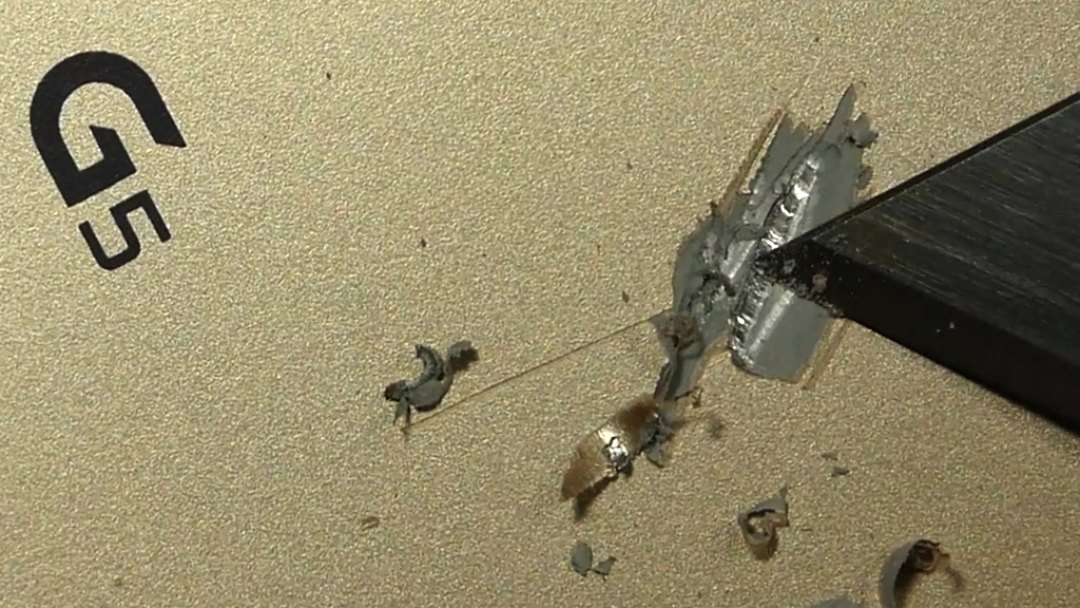
In case you missed it, last week an LG G5 teardown video appeared to show that the back of the LG G5 was plastic painted to look like metal. While the phone’s chassis is aluminum underneath, the depth of the “plastic” – which turned out to be primer for the paint to adhere to – has caused many to question whether the LG G5 can honestly be marketed as an “all metal” phone. Here’s where we stand right now.
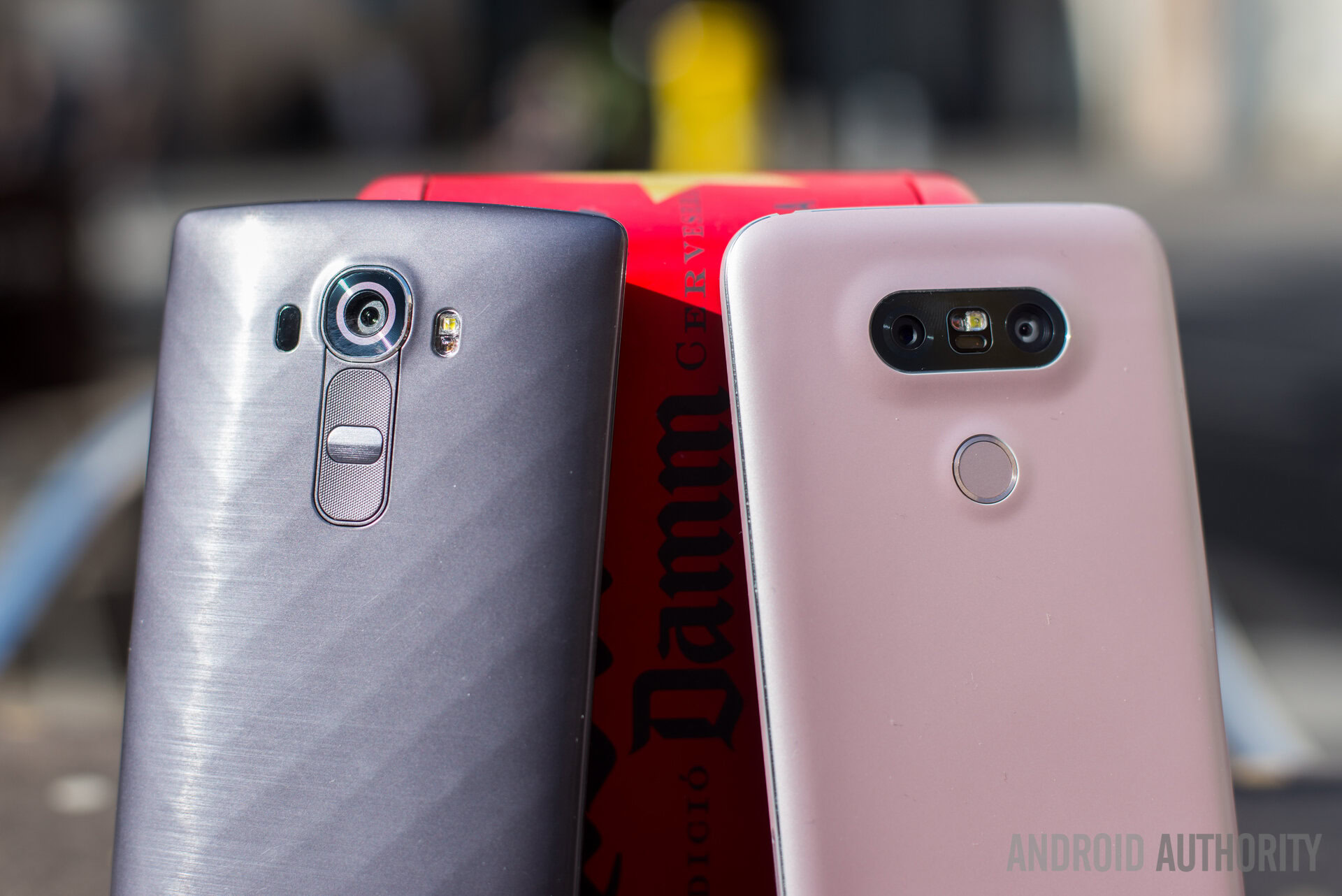
First thing’s first: the JerryRigEverything video was a little misleading because it identified primer as plastic (although only LG knows the exact makeup of its primer base), leading tech sites, including ours, to pick up on the story and spread the idea that plastic lay underneath the painted surface of the LG G5. While this initial assumption is not technically true, it’s easy to see how it was made in good faith (I expect most of us couldn’t distinguish between primer and plastic either).
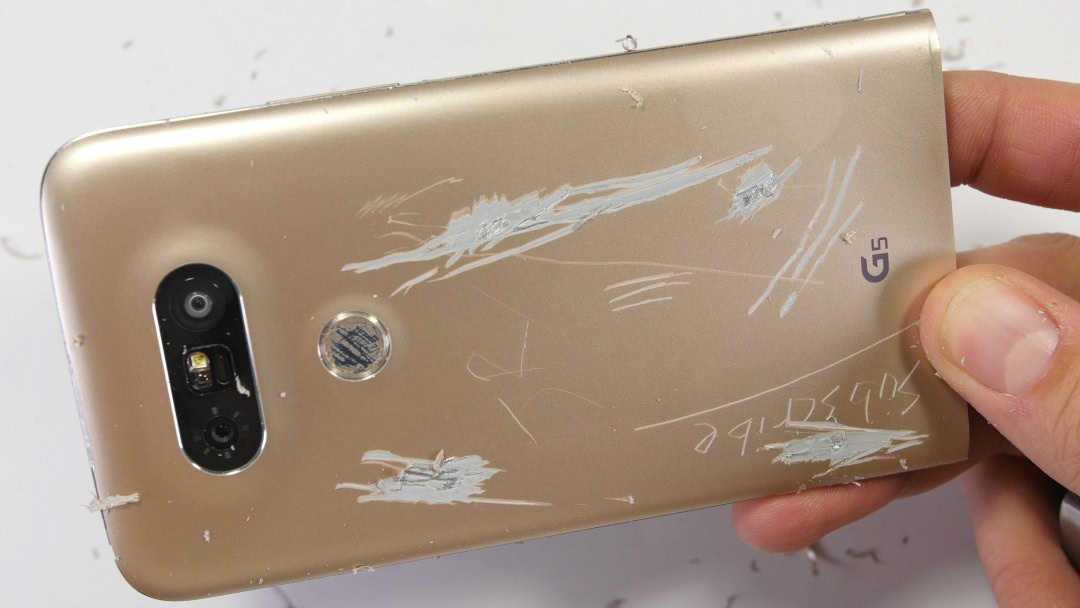
LG’s response
When the video surfaced I contacted LG and updated our original article with the information I was given at the time. I’ve since been contacted by LG’s global communications director, Ken Hong, with further details, which I’ll paste in for you in full, before picking up the discussion. LG has also now made an official statement on the LG G5 materials.
What you’re seeing in that video is primer, not plastic. The primer is required to get the paint to bond to the aluminum body. The aluminum alloy we sourced is known as LM201b (patent pending) and was developed at the Korea Institute of Industrial Technology for use in automobiles and aircraft.
LM201b, unlike the aluminum used in competing smartphones, is diecast unibody, not sheet aluminum. We chose LM201b because it’s very sturdy and lightweight. The weight characteristic was important because unlike other aluminum phones, ours has the modular design so the case needed to be extra strong. Trying to achieve this level of structural strength with traditional aluminum would have resulted in heavy phone.
The insulated antenna is embedded in the aluminum and coated in primer, paint and clearcoat [which] allows the signal to still get through. And it’s not just any old paint but a much more durable type with microscopic metal particles that is applied using a process called “microdizing” to bond it to the aluminum.
I think it’s incorrect to say that a product isn’t all metal if paint is involved. That’s like saying cars and airplanes aren’t metal because they’re also painted. For the record, even metal that’s anodized will scratch off. Our process may be different but it achieved what we were aiming for, which is a smooth, seamless metal finish that’s durable and lightweight.
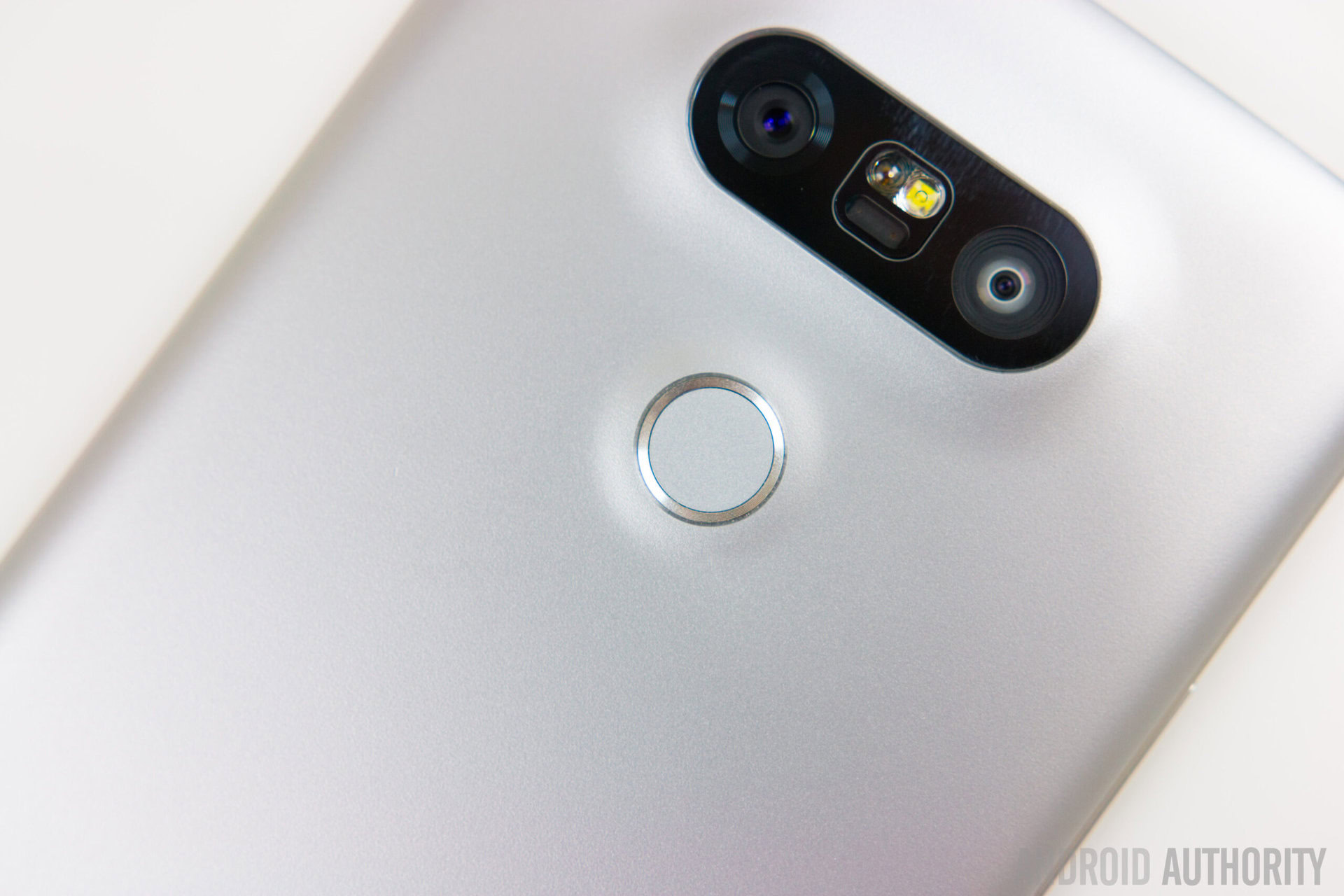
Erica Griffin offers a great explanation for the anodization process in her LG G5 Not All Metal: Explained video: “metal that’s anodized will scratch off. Anodization isn’t paint, it’s an oxidation process that makes aluminum wear resistant and also allows you to add die to color the metal in the process.”
Elsewhere, Hong also mentioned: “We figured out a way to integrate the antenna bands into the aluminum seamlessly so you can’t feel the lines and covered the LM201b with primer and paint using a process called microdizing, which means that tiny particles of metal are infused in the coating and bonded to the aluminum.”
Some people have a tendency to assume certain things (such as metal having to make contact with skin for a product to be considered made of metal) which is unfortunate.
And in response to the questioning of the LG G5 marketing materials: “For the record, none of the advertised claims behind G5 were inaccurate. All we have ever claimed is that the G5 features a metal uni-body, nothing more, nothing less. Some people have a tendency to assume certain things (such as metal having to make contact with skin for a product to be considered made of metal) which is unfortunate and we chose not to play that game. Nowhere on the G5 does the primer touch skin so whatever side effects there may be, it’s due to something other than the primer.” (Note that some of these comments have since been edited by LG)
LG has also issued an official statement on the materials used in the LG G5, including this relevant part:
After the die-casting is complete, the insulating antenna slit is applied directly to the aluminum casing followed by a coating of primer which provides additional insulation and enhances the surface profile for the “microdizing” process, where pigment containing tiny metal particles is applied directly to the primer to provide a smooth and durable finish. While both anodized aluminum and microdized aluminum will scratch if enough pressure is applied, in the case of the G5 the gray primer beneath the pigment layer may be mistaken for plastic when the coloring is scratched off. We want to reassure our customers that the uni-body of the LG G5 is advanced aluminum alloy, not plastic.
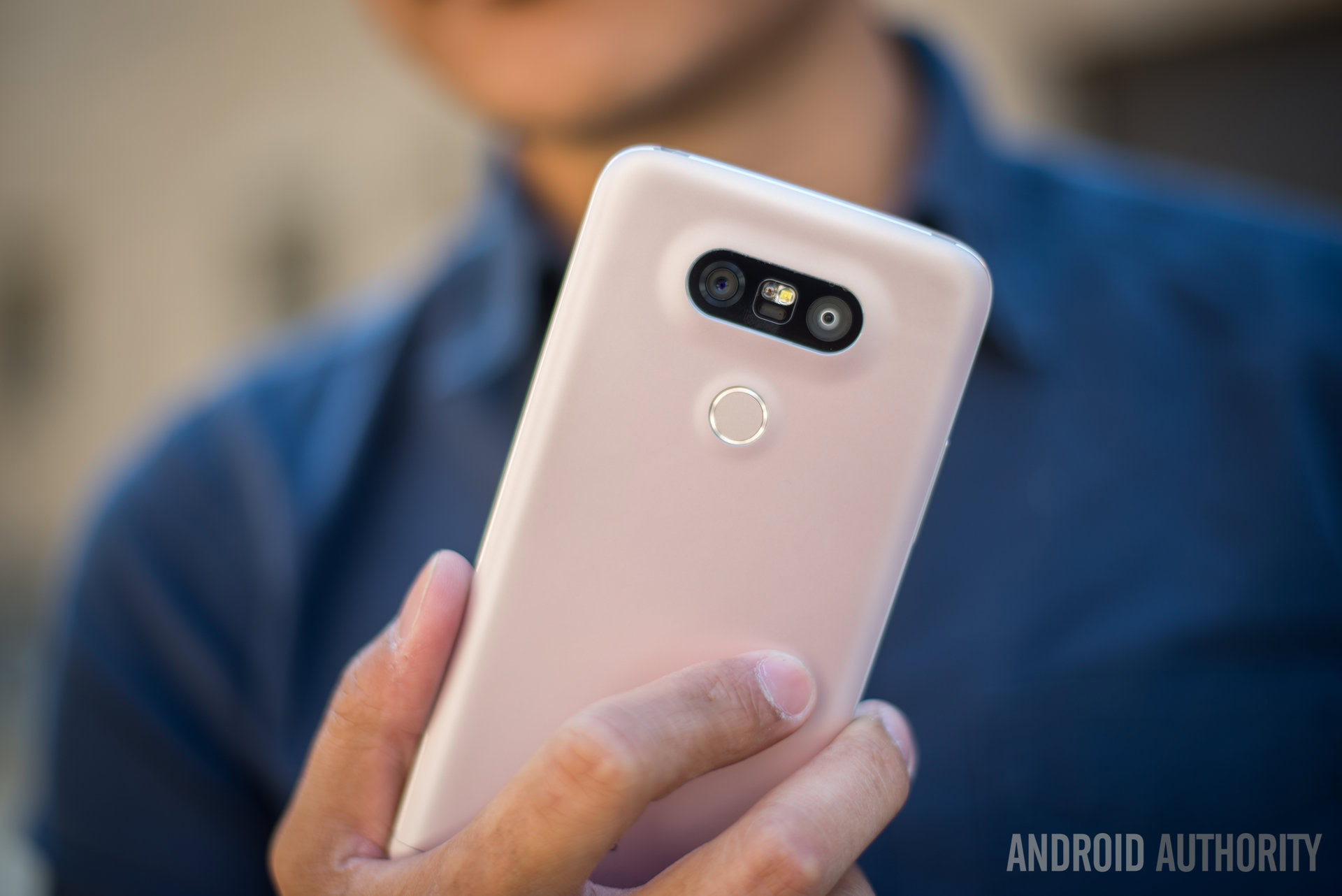
What the LG G5 marketing says
There are a few issues at hand here: how one defines a “metal phone”, what allowances are made for material science and how marketing materials can potentially confuse a situation through the understandable necessity of keeping complex terminology out of play. A further question arises as to what degree those marketing materials can then be claimed to be misleading if the reality is a little more complicated.
For the record, here is what LG had to say about the G5 in the official press release:
- “…a brand new design with… a sleek, metal uni-body”
- “Encased in a sleek metal aluminum body”
- “…a smooth colorful metal surface through an advanced microdizing process which takes anodized aluminum to a whole new level”
- “…the insulative antenna is invisibly integrated into the body without disrupting the seamless look of the metal uni-body”
- “LG designers took the metal body concept one step further”
- “…in a full metal uni-body design”
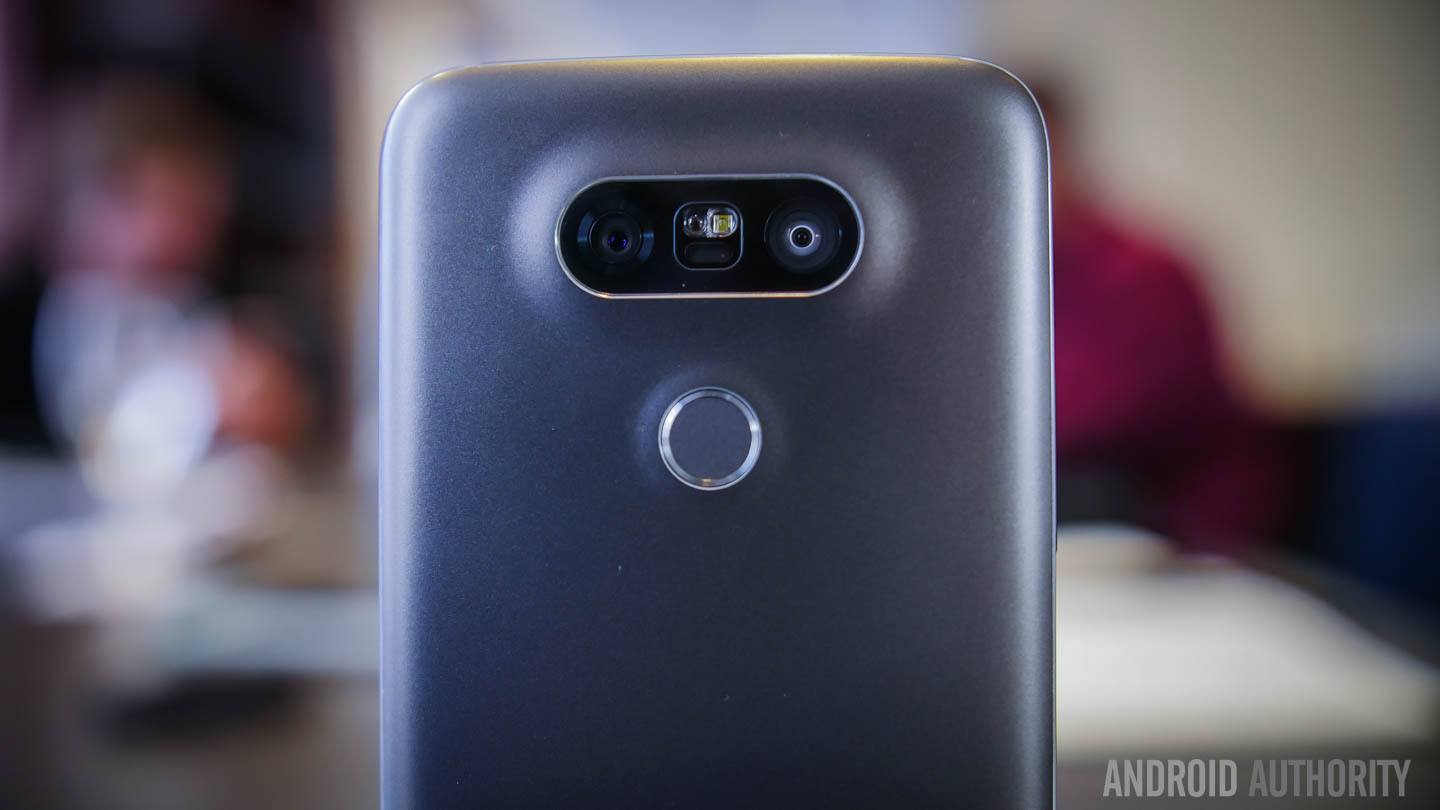
Misleading marketing or misunderstood terminology?
The LG G5 marketing materials mention “full metal” or a “metal uni-body” multiple times. While no one is debating whether the internal structure of the G5 is made of aluminum, it is being argued that by marketing the G5 in this way, that LG is capitalizing on the general understanding that a “metal phone” means that the surface that touches your hand is metal, not that the metal lies somewhere under a thick coat of primer.
If the structural part of an object is metal with some plastic parts, a display and so on attached, does that mean it is not metal anymore? Not at all. But it also kind of makes the phrase “full metal” ring a little untrue. While the general consensus may be technically incorrect here and I’ve been assured by LG that its legal team vetted the claims being made, it is still the common understanding of the term, and one that LG’s marketing benefits from.
Skeptics could just as easily respond that a hardwood floor covered in carpet feels a lot more like a carpeted floor than a hardwood floor.
The question is whether LG is deliberately misleading people, and I don’t think it is. As mentioned above, a painted vehicle isn’t any less metal. A car coated with a solid inch of primer and then paint is still metal and damaged vehicles have had dents treated with body filler for decades without requiring a special mention. But skeptics could just as easily respond that a hardwood floor covered in carpet feels a lot more like a carpeted floor than a hardwood floor.
A part of the issue is that the explanations above don’t entirely jive with what is being said in the marketing. Saying “a colorful metal surface “ and “the seamless look of the metal uni-body” absolutely makes it sound like the external surface that you see and feel is metal, not that the metal uni-body exists somewhere underneath a layer of primer and paint. So while I don’t think there’s a grand conspiracy here, I’m not entirely happy drinking the LG Kool-Aid either.
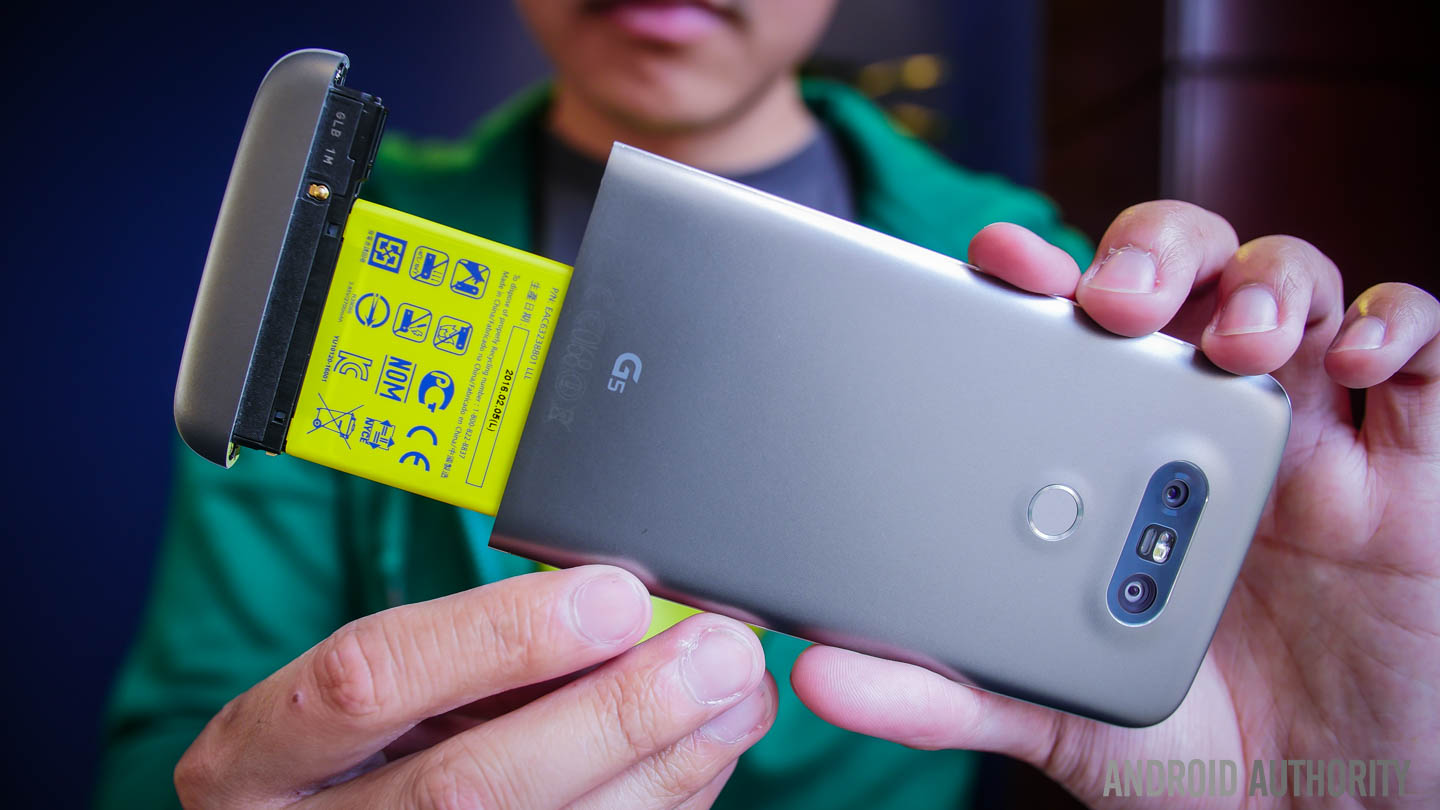
Who is right?
The funny thing is that both sides are right. On a technical (and probably legal) level, LG is likely correct. A metal phone coated with primer can still justifiably be called an all metal phone (or “full metal”). At the same time, consumers have every right to feel like this isn’t really true. Whether you feel that LG tried to mislead you you’ll have to decide for yourself (even knowing what I know now, that press release still doesn’t sit quite right with me). But LG had to know that the primer layer would be revealed once the phone was on the market and people started dropping and scratching it through everyday wear and tear. If it didn’t, it would be the most poorly planned cover-up in history.
The problem as I see it comes down to the thickness of the layer of primer. If the primer layer was super thin no one would complain: they’d see a metal structure with equally thin layers of primer and paint on top and be happy. But because it’s such a thick layer, calling the G5 all metal suddenly doesn’t feel right with a lot of people, and that’s totally understandable. Whether it’s splitting hairs or not, consumer sentiment matters. This is what Hong had to say about the primer thickness: “The combined thickness of the primer and color layer is approximately 0.15mm while the aluminum varies between 0.65mm to 0.85 mm in thickness based on where on the G5 you measure.”
[related_videos title=”MORE LG G5:” align=”center” type=”custom” videos=”681627,676936,676155,674956″]
Of course, LG could also respond that their paint layer has aluminum particles in it, so in a way your hand is more in contact with metal than primer, but then that opens up another question of what proportion of a thing needs to be element X in order to call it “all element X”. Is it 100%? Is it 90%? 75%? Is painted metal still “all metal”? It all boils down to a gut reaction: do you feel misled or are you willing to accept responsibility for taking something at face value without looking deeper?
At the start of this whole situation we made an assumption based on another assumption and both of those assumptions have turned out to be problematic. This is what we get for accepting certain things as true, whether they come from a teardown video or from official marketing. Suffice to say, both LG and I have learned a lesson from this. LG has promised to generate something this week “to give more insight into the manufacturing process,” but until then, rest assured that the LG G5 is made of metal, just not exactly in the way you thought it was.